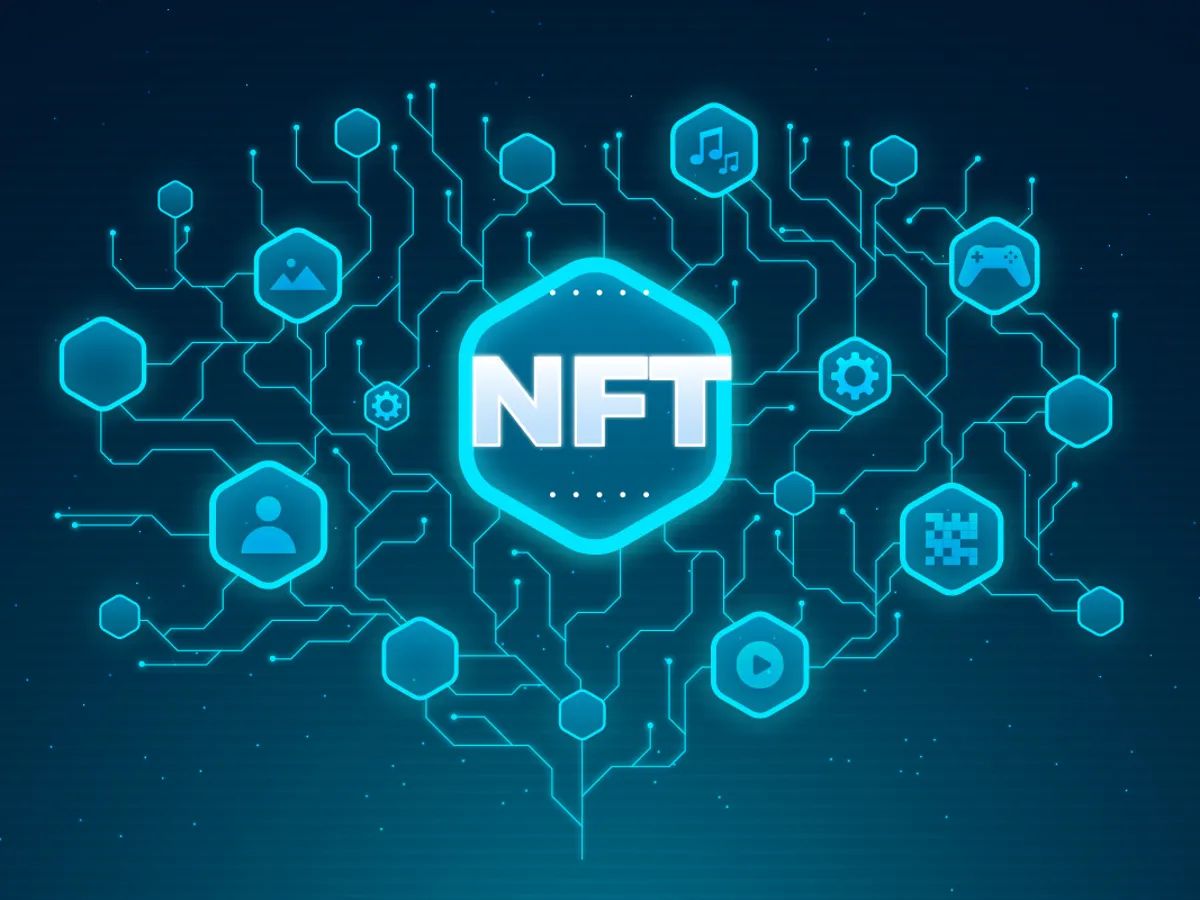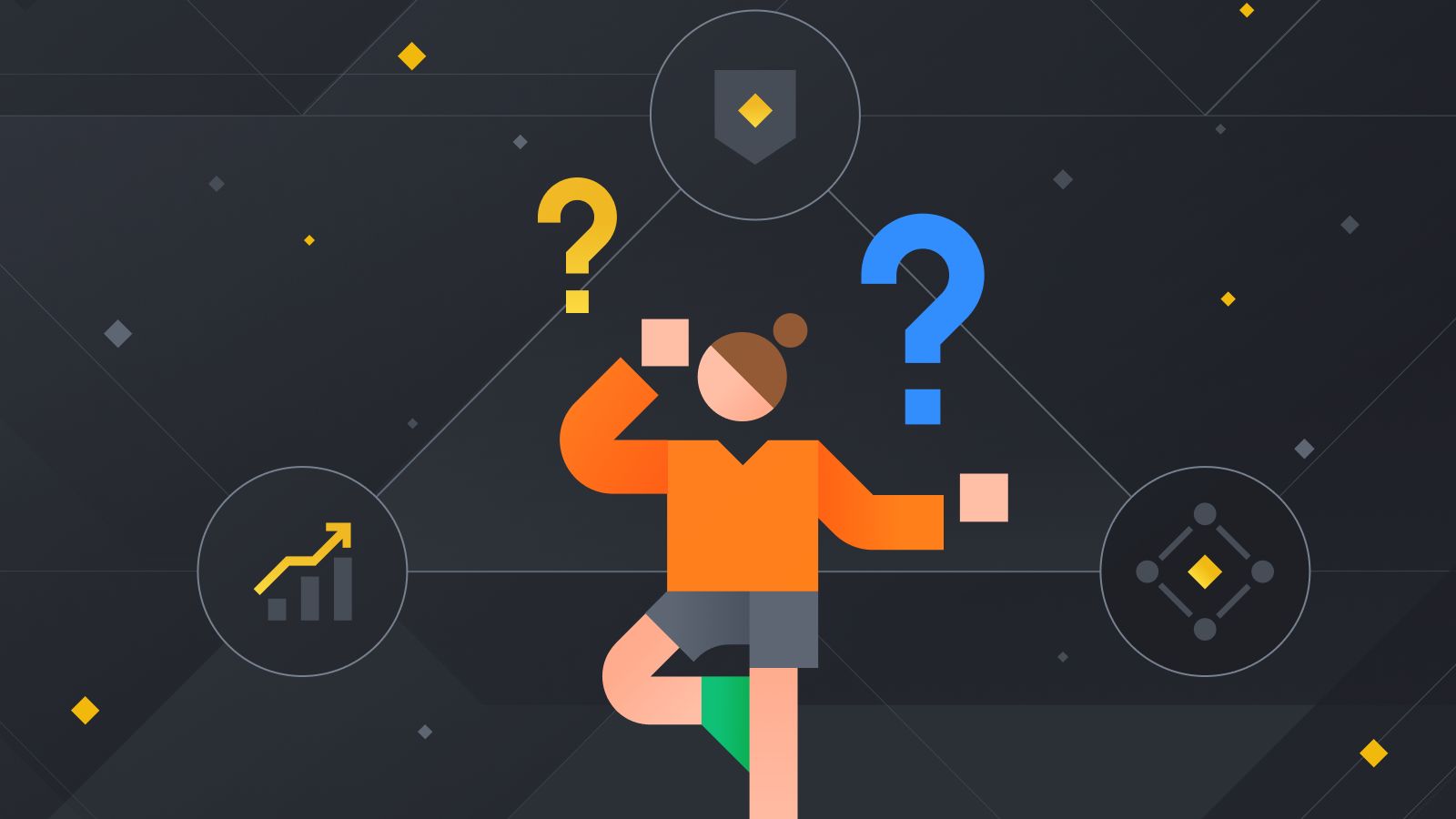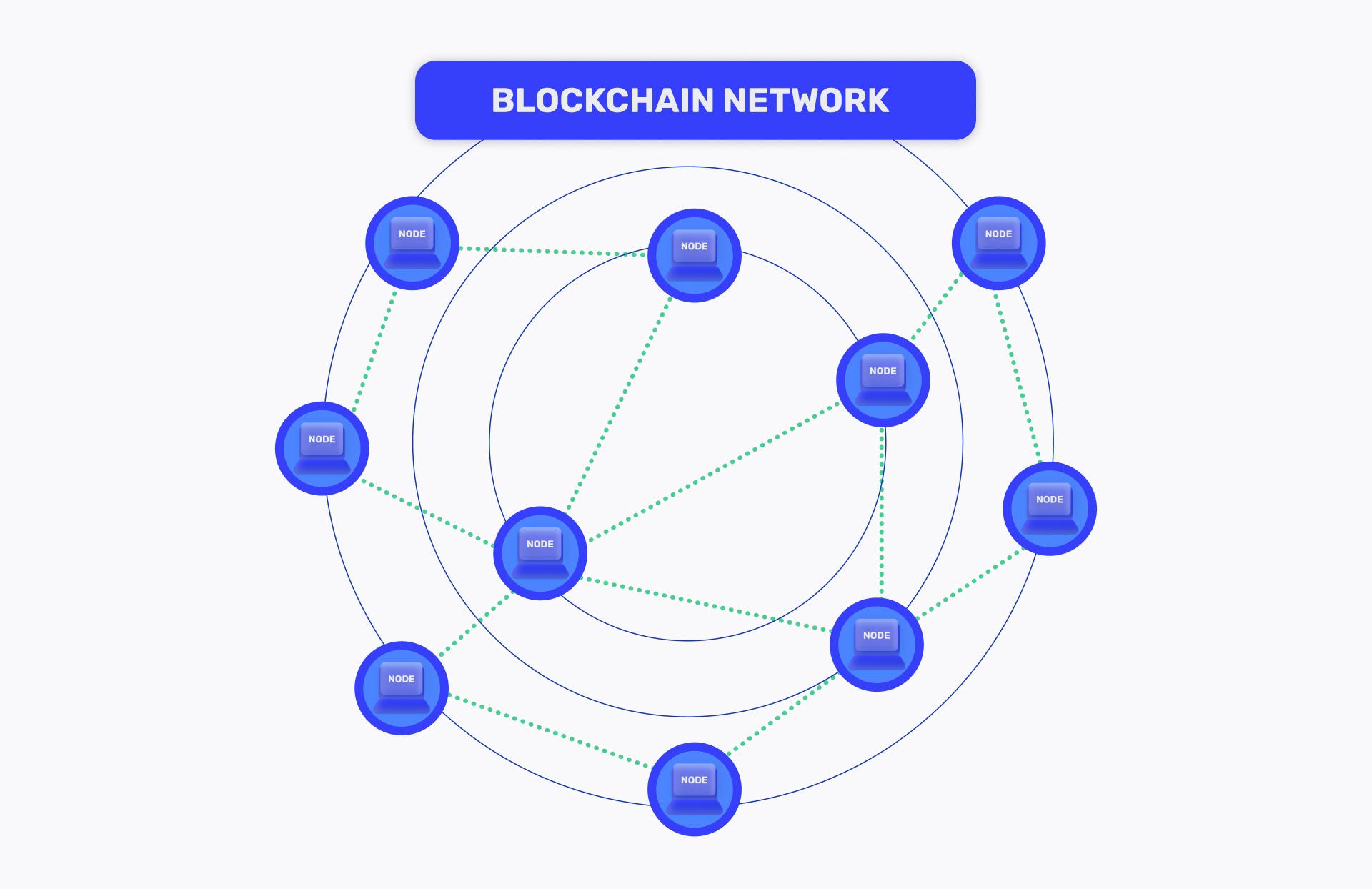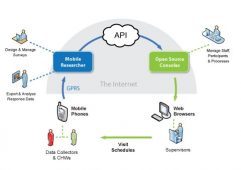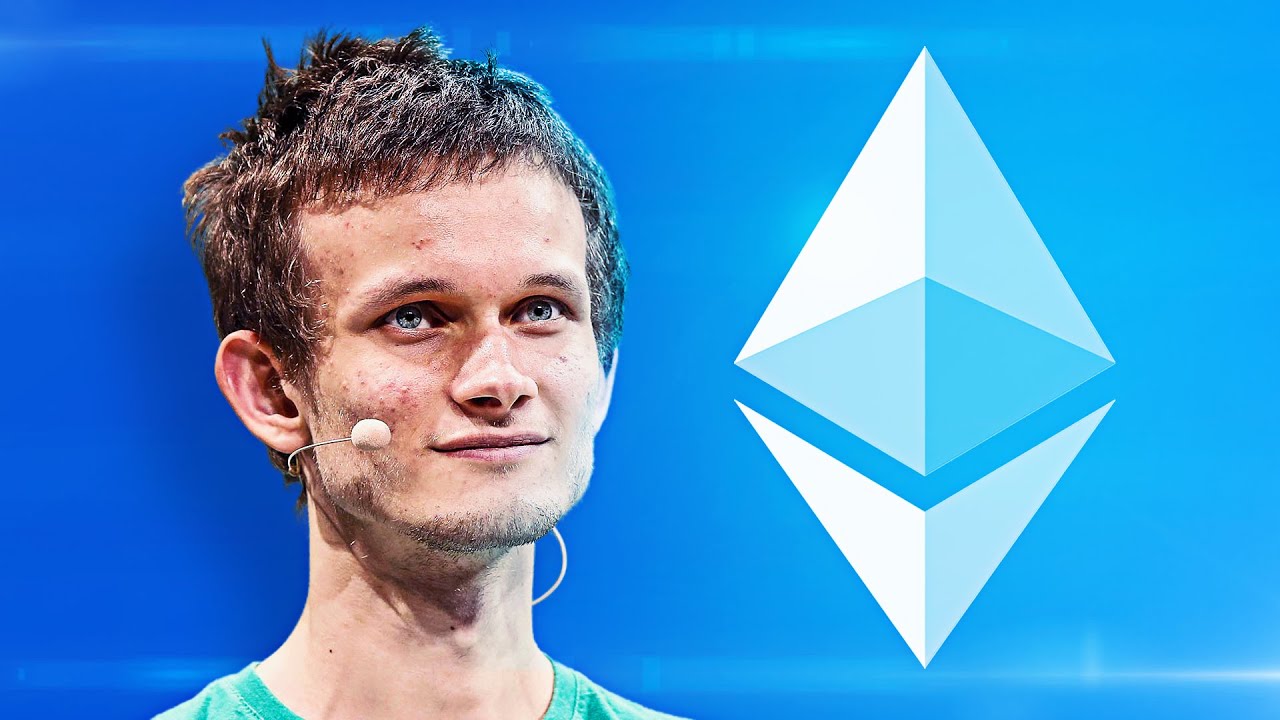Introduction
Blockchain technology has gained significant attention in recent years, revolutionizing various industries such as finance, supply chain management, healthcare, and more. As the demand for decentralized applications (DApps) and blockchain-based solutions continues to grow, so does the need for skilled blockchain developers.
Becoming a blockchain developer offers a range of opportunities to work on cutting-edge projects and contribute to the expansion of this transformative technology. However, this field requires a solid understanding of blockchain principles, programming languages, and development tools.
This article will provide an overview of the key requirements and skills needed to become a successful blockchain developer. Whether you are new to programming or an experienced developer looking to transition into blockchain development, this guide will help you navigate the necessary steps.
Throughout this article, we will explore the programming languages, platforms, frameworks, and tools commonly used in blockchain development. We will also delve into the importance of cryptography and security principles and how they are applied in blockchain technology.
Additionally, we will discuss the significance of smart contracts and how to develop, test, and deploy them effectively. Furthermore, we will touch on the importance of continuous learning and staying updated with the latest developments in the blockchain industry.
By understanding these essential aspects, aspiring blockchain developers can lay a solid foundation to embark on a rewarding and exciting career in this rapidly evolving field. So, let’s dive into the world of blockchain development and explore the key prerequisites and skills needed.
Understanding Blockchain Technology
Before delving into the technicalities of blockchain development, it is crucial to have a clear understanding of blockchain technology itself. At its core, a blockchain is a decentralized and immutable ledger that records transactions or data across multiple computers, known as nodes, in a transparent and secure manner.
One of the key features of blockchain technology is its ability to ensure trust and transparency without the need for intermediaries. Rather than relying on a centralized authority, blockchain relies on cryptographic algorithms and consensus mechanisms to validate and verify transactions.
A blockchain consists of a series of blocks that are linked together in a chronological order, forming a chain. Each block contains a list of transactions or data, along with a unique identifier called a hash. The hash of each block is generated based on the data within that block and the hash of the previous block, creating an immutable record of all transactions.
The decentralized nature of blockchain ensures that no single entity has control over the entire network, making it resistant to tampering or manipulation. To alter any data within a blockchain, one would need to gain control of a majority of the network’s computing power, making it prohibitively difficult.
Blockchain technology has several key characteristics that set it apart:
- Decentralization: A blockchain operates on a peer-to-peer network, eliminating the need for a central authority.
- Transparency: All transactions recorded on a blockchain are visible to all participants, creating a transparent ecosystem.
- Immutability: Once a transaction is added to the blockchain, it cannot be altered or deleted, ensuring the integrity of the system.
- Security: Blockchain utilizes cryptographic algorithms and consensus mechanisms to secure data and prevent unauthorized access.
- Efficiency: Blockchain reduces the reliance on intermediaries, streamlining processes and reducing costs.
By grasping these fundamental concepts of blockchain technology, aspiring developers can approach their learning journey with a solid foundation. Understanding the underlying principles enables developers to design and develop robust and secure blockchain applications that harness the full potential of this transformative technology.
Prerequisites for Becoming a Blockchain Developer
Embarking on a career as a blockchain developer requires a range of skills and knowledge. While prior experience in software development is beneficial, it is not a strict requirement. With determination and a willingness to learn, individuals from various backgrounds can enter the world of blockchain development. Here are some prerequisites to consider:
1. Understanding of Programming: Basic knowledge of programming concepts and languages is essential. Familiarize yourself with languages such as JavaScript, Python, or C++. This foundation will enable you to grasp blockchain development concepts more effectively.
2. Knowledge of Data Structures and Algorithms: Understanding data structures and algorithms is crucial for building efficient and scalable blockchain applications. Familiarize yourself with concepts such as linked lists, hash tables, and sorting algorithms.
3. Familiarity with Version Control Systems: Proficiency in working with version control systems like Git is essential. Version control allows you to track, manage, and collaborate on code changes efficiently.
4. Understanding of Web Development: Since many blockchain applications use web interfaces, having a fundamental understanding of web development technologies such as HTML, CSS, and JavaScript is beneficial.
5. Knowledge of Cryptography: Cryptography plays a crucial role in blockchain technology, providing security and privacy. Familiarize yourself with cryptographic concepts such as public-key encryption, hashing, and digital signatures.
6. Problem-Solving Skills: Blockchain development often involves complex problem-solving. Enhance your analytical and critical thinking skills to overcome challenges and design efficient solutions.
7. Continuous Learning: The blockchain landscape evolves rapidly, and staying updated with the latest trends, tools, and frameworks is essential. Engage in online courses, attend workshops, and join blockchain communities to keep learning and growing.
8. Passion and Curiosity: Being passionate and curious about blockchain technology will fuel your motivation to learn and explore further. Stay curious, ask questions, and actively seek opportunities to apply what you’ve learned.
While these are the key prerequisites, it’s important to note that blockchain development is a continuous learning process. Embrace a growth mindset and be open to expanding your knowledge as the technology evolves.
Learning Programming Languages
Proficiency in programming languages is essential for blockchain development. While there is no one-size-fits-all language for blockchain, there are certain languages commonly used in the industry. Here are a few programming languages that you should consider learning:
1. Solidity: Solidity is the most widely used programming language for writing smart contracts on the Ethereum platform. It is a statically-typed, high-level language with similarities to JavaScript and is specifically designed for writing code that runs on blockchain platforms.
2. JavaScript: JavaScript is a versatile programming language commonly used in web development. In the context of blockchain, JavaScript is widely used for building decentralized applications that interact with blockchain networks through APIs.
3. Python: Python is known for its simplicity and readability, making it an excellent choice for beginners. It is widely used in various domains, including blockchain development. It has a vast library ecosystem that simplifies the development process.
4. C++: C++ is a powerful and efficient programming language. It is commonly used in the development of blockchain projects, as it offers low-level control and high-performance capabilities.
5. Go: Go, also known as Golang, is a language created by Google that is gaining popularity in blockchain development. It is known for its simplicity, efficiency, and strong support for concurrent programming.
When starting your blockchain development journey, it is recommended to focus on learning one language at a time. Solidity is a good starting point if you plan to work with Ethereum-based applications. Additionally, JavaScript and Python are versatile languages that can be useful when working on various blockchain platforms.
There are numerous online tutorials, documentation, and courses available to help you learn these programming languages. Practice writing code, build small projects, and participate in open-source blockchain projects to apply your knowledge and gain hands-on experience.
Remember, learning programming languages is an ongoing process, especially in the ever-evolving blockchain industry. Stay updated with new language features, best practices, and emerging trends to stay ahead in your blockchain development career.
Solidity: The Essential Language for Smart Contracts
When it comes to blockchain development, understanding Solidity is crucial as it is the primary programming language for writing smart contracts on the Ethereum platform. Smart contracts are self-executing contracts with the terms of the agreement directly written into code.
Solidity is a statically-typed, high-level programming language that shares similarities with JavaScript. It is designed specifically for writing code that runs on blockchain platforms, enabling developers to create decentralized applications (DApps) and automate complex transactions.
Here are some key reasons why Solidity is essential for blockchain developers:
1. Ethereum-Compatible: Solidity is compatible with the Ethereum Virtual Machine (EVM), making it the go-to language for developing smart contracts on the Ethereum network. Ethereum is one of the leading blockchain platforms, supporting a wide range of decentralized applications.
2. Smart Contract Development: Solidity provides the necessary syntax and features to write smart contracts. With Solidity, you can define functions, data structures, and implement business logic within smart contracts. This allows for the creation of automated and trustless applications that execute without the need for intermediaries.
3. Ethereum Tooling and Ecosystem: Solidity has excellent tooling support and a vibrant ecosystem, making it easy for developers to build, test, and deploy smart contracts. Tools like the Solidity compiler, Remix IDE, and Truffle framework provide a seamless development experience.
4. Widely Adopted Language: Solidity has gained significant traction in the blockchain community. It is widely used for token creation, decentralized finance (DeFi) applications, and various other use cases on the Ethereum blockchain. Learning Solidity opens up ample opportunities in the blockchain job market.
5. Code Reusability: Solidity is an object-oriented programming language, allowing developers to write reusable code. With its inheritance and contract composition features, it enables the creation of modular and maintainable smart contracts.
Getting started with Solidity requires understanding key concepts like contract deployment, state variables, functions, and events. Solidity also incorporates various features such as modifiers, error handling, and mappings to add flexibility and security to smart contracts.
As you begin your Solidity journey, it is helpful to explore existing Solidity code examples, study the Solidity documentation, and participate in online forums and communities to gain insights and learn from experienced developers. Building small projects and working on real-world use cases will enhance your understanding and proficiency in Solidity programming.
Remember, Solidity is continuously evolving, with new features and enhancements being introduced regularly. Keep up with the latest updates and best practices to stay at the forefront of smart contract development on the Ethereum platform.
Blockchain Platforms and Frameworks
Blockchain development often revolves around leveraging existing blockchain platforms and frameworks to streamline the development process. These platforms provide the necessary infrastructure and tools to build decentralized applications (DApps) and deploy smart contracts. Here are some popular blockchain platforms and frameworks to consider:
1. Ethereum: Ethereum is one of the most widely used blockchain platforms for building DApps and deploying smart contracts. It provides a robust and mature ecosystem with extensive tooling support, documentation, and a large developer community.
2. Hyperledger Fabric: Hyperledger Fabric is an open-source blockchain framework hosted by the Linux Foundation. It is designed for developing enterprise-grade blockchain solutions. Fabric offers features like privacy, scalability, and permissioned networks, making it suitable for various business use cases.
3. Corda: Corda is a distributed ledger platform developed by the R3 consortium. It is specifically designed for use in financial institutions and facilitates secure and private transactions. Corda’s focus on privacy and interoperability makes it a popular choice for financial applications.
4. Stellar: Stellar is an open-source blockchain platform designed for fast, low-cost, and secure cross-border transactions. It is widely used in the field of financial services, particularly in areas such as remittances and micropayments.
5. Truffle Framework: Truffle is a development framework that allows for easier development, testing, and deployment of blockchain applications. It provides a suite of tools, including a development environment, testing framework, and asset pipeline, to streamline the development process on platforms like Ethereum.
6. EOSIO: EOSIO is a blockchain platform known for its scalability and high transaction throughput. It offers a developer-friendly environment, providing tools and libraries for building decentralized applications. EOSIO aims to support large-scale applications with thousands of transactions per second.
Exploring and familiarizing yourself with these platforms and frameworks will help you choose the most suitable one for your specific use case. Each platform has its own unique features, strengths, and limitations, so it is essential to consider factors like scalability, security, consensus mechanisms, and community support when making a decision.
Additionally, many blockchain platforms and frameworks provide software development kits (SDKs) and APIs that simplify the integration of blockchain technology into existing applications. Understanding how to use these tools effectively can significantly enhance the development process and reduce time-to-market for blockchain-based solutions.
Ultimately, the choice of platform or framework will depend on your specific project requirements and goals. Keep in mind that the blockchain landscape is continuously evolving, and new platforms and frameworks are emerging. Stay updated with the latest developments and explore new technologies as they arise to stay at the forefront of blockchain development.
Tools and Libraries for Blockchain Development
When it comes to blockchain development, leveraging the right tools and libraries can greatly enhance productivity and streamline the development process. These tools provide functionalities like smart contract deployment, testing, monitoring, and more. Here are some essential tools and libraries for blockchain development:
1. Remix: Remix is a browser-based integrated development environment (IDE) specifically designed for writing, testing, and deploying smart contracts on Ethereum. It provides a user-friendly interface and features like code analysis, debugging, and deployment options.
2. Truffle: Truffle is a popular development framework for Ethereum-based blockchain projects. It offers a suite of tools, including a development environment, testing framework, and asset pipeline. Truffle simplifies the process of compiling, deploying, and interacting with smart contracts.
3. Ganache: Ganache is a local blockchain development environment provided by the Truffle suite. It allows developers to deploy a local Ethereum network for testing and development purposes. Ganache provides a set of accounts with prefunded Ether for testing smart contracts.
4. Web3.js: Web3.js is a JavaScript library that enables interaction with the Ethereum blockchain. It provides a set of APIs for web developers to integrate their applications with Ethereum networks, interact with smart contracts, and manage accounts and transactions.
5. OpenZeppelin: OpenZeppelin is an open-source library of reusable and secure smart contracts for Ethereum. It offers a collection of audited and battle-tested contracts that developers can use to build secure and upgradable DApps.
6. Hyperledger Composer: Hyperledger Composer is a set of development tools and libraries that simplifies the creation of blockchain applications on the Hyperledger Fabric framework. It provides a modeling language, a command-line interface (CLI), and a REST API for building business networks.
7. Infura: Infura is a web service that provides access to Ethereum nodes. It eliminates the need to run a local Ethereum node, allowing developers to interact with the Ethereum blockchain through simple APIs. Infura is commonly used for deploying and testing smart contracts.
8. Ethers.js: Ethers.js is a JavaScript library that simplifies interaction with Ethereum networks. It provides a higher-level interface compared to Web3.js, making it easier for developers to build decentralized applications and interact with smart contracts.
These are just a few examples of the many tools and libraries available for blockchain development. Depending on your specific needs and platform preferences, you can explore and experiment with various other options as well.
When using these tools and libraries, it’s important to keep track of their updates and best practices. The blockchain space is rapidly evolving, and staying up to date with the latest advancements will ensure that you leverage the most efficient and secure solutions in your development process.
Cryptography and Security Principles
Blockchain technology relies heavily on cryptography to ensure the security and integrity of data. Understanding cryptography and implementing robust security practices is crucial for blockchain developers. Here are some key concepts related to cryptography and security principles in blockchain development:
1. Hash Functions: Hash functions play a fundamental role in blockchain technology. They take input data of any size and produce a fixed-size output, known as a hash. Hash functions are used to verify the integrity of data and create digital signatures.
2. Public-Key Encryption: Public-key encryption, also known as asymmetric encryption, enables secure communication between parties without needing to share a secret key. It involves the use of public and private key pairs, where the public key encrypts data, and the private key decrypts it.
3. Digital Signatures: Digital signatures provide a way to verify the authenticity and integrity of messages or transactions. They utilize the private key of the sender to encrypt a hash of the data, which can be decrypted using the corresponding public key for verification.
4. Symmetric Encryption: Symmetric encryption uses a single shared secret key to both encrypt and decrypt data. It is typically faster and more efficient than public-key encryption but requires a secure channel to exchange the secret key.
5. Key Management: Proper management of cryptographic keys is critical for maintaining the security of blockchain applications. Key generation, storage, and secure handling practices are essential to prevent unauthorized access and potential breaches.
6. Consensus Mechanisms: Consensus mechanisms, such as Proof-of-Work (PoW) and Proof-of-Stake (PoS), ensure the security and integrity of a blockchain network. These mechanisms utilize cryptographic algorithms to achieve consensus and prevent malicious activities.
7. Secure Smart Contract Development: Smart contracts should be designed and implemented with security in mind. This includes practices such as input validation, access control, and thorough testing to mitigate vulnerabilities and potential attack vectors.
8. Privacy and Confidentiality: Enhancing privacy and confidentiality is crucial in many blockchain applications. Techniques like zero-knowledge proofs, ring signatures, and homomorphic encryption can be used to protect the privacy of transactional and sensitive data.
As a blockchain developer, it is important to stay updated with the latest cryptographic techniques and security best practices. Familiarize yourself with cryptographic libraries and frameworks specific to the blockchain platform you are working on.
Additionally, consider conducting thorough security audits, penetration testing, and code reviews to identify and remediate any potential vulnerabilities. Engaging with the wider blockchain community and attending security-focused conferences and events can also provide valuable insights and knowledge in this rapidly evolving field.
By implementing strong cryptographic measures and following sound security principles, blockchain developers can build secure and trustworthy applications that protect user data and ensure the integrity of the blockchain ecosystem.
Understanding Smart Contracts
Smart contracts are self-executing contracts with the terms of the agreement directly written into code. They automatically enforce the obligations and conditions of an agreement upon the fulfillment of certain predefined conditions. Understanding smart contracts is essential for blockchain developers, as they play a critical role in decentralized applications (DApps) and blockchain-based solutions.
Here are some key aspects to consider when it comes to understanding smart contracts:
1. Immutable and Transparent: Smart contracts are stored on the blockchain, making them immutable and tamper-proof. Once deployed, they cannot be altered or manipulated, ensuring the transparency and integrity of the contract.
2. Self-Executing: Smart contracts are designed to automatically execute the terms and conditions outlined within the code. Once the predefined conditions are met, the contract is executed, and the actions specified in the code are carried out.
3. Decentralized Agreement: Traditional contracts often rely on intermediaries or central authorities to enforce agreements. Smart contracts remove the need for intermediaries, as the code itself acts as the governing force, allowing for direct peer-to-peer transactions.
4. Trust and Security: Smart contracts leverage blockchain’s decentralized and transparent nature to enhance trust and security. They eliminate the need for blindly relying on third parties, as the code executes exactly as written and is verified by the network participants.
5. Limitations and Challenges: While smart contracts offer numerous benefits, there are limitations and challenges to consider. Smart contracts are only as good as the code written, and vulnerabilities can lead to security flaws. Additionally, smart contracts cannot access external data sources, relying solely on data available on the blockchain.
6. Use Cases: Smart contracts have a wide range of applications in different sectors. They are particularly useful in finance, supply chain management, decentralized exchanges, voting systems, and digital identity management, to name a few.
7. Programming Languages: Smart contracts are typically written in specialized programming languages, such as Solidity for Ethereum or Chaincode for Hyperledger Fabric. These languages offer specific syntax and features that facilitate the execution of smart contracts on their respective blockchains.
Understanding smart contracts involves gaining proficiency in the programming language used to write them, grasping the logic and flow of the contract, and considering the possible scenarios and edge cases that need to be accounted for in the code.
Building and testing smart contracts in a development environment, utilizing tools like Remix or Truffle, allows developers to ensure the functional correctness and security of their code. Proper testing and auditing are crucial to identify and rectify any vulnerabilities before deploying the contract to the production environment.
By comprehending the capabilities and limitations of smart contracts, blockchain developers can harness their potential to create innovative and decentralized solutions that redefine traditional business processes and transactions.
Testing and Debugging Blockchain Applications
Testing and debugging are crucial aspects of blockchain application development, ensuring the reliability, security, and functionality of the deployed applications. It is essential to thoroughly test and debug blockchain applications to identify and fix any potential issues or vulnerabilities. Here are some key considerations for testing and debugging blockchain applications:
1. Unit Testing: Unit testing involves testing individual components or functions of the blockchain application in isolation. It ensures that each component behaves as expected and helps identify bugs at an early stage. Solidity, for example, provides testing frameworks like Truffle and Solidity’s internal testing functionalities.
2. Integration Testing: Integration testing involves testing how the various components of the blockchain application interact with each other. It ensures that different parts of the application can work together seamlessly and that data is transmitted correctly between them.
3. Functional Testing: Functional testing verifies that the blockchain application performs as expected and meets the defined requirements. It involves testing different use cases and scenarios to ensure the desired functionality is achieved.
4. Security Testing: Security testing is crucial in blockchain development to identify vulnerabilities and ensure the integrity and confidentiality of the application. It involves conducting penetration testing, code review, and vulnerability assessment to mitigate potential security risks.
5. Performance Testing: Performance testing is important to assess the scalability and efficiency of the blockchain application. It involves testing the application under different loads and stress conditions to measure response times, transaction throughput, and resource utilization.
6. Debugging: Debugging blockchain applications can be challenging due to their distributed and decentralized nature. Tools like Remix, Truffle Debugger, and logging statements within smart contracts can help identify and resolve issues. Analyzing error messages, stack traces, and transaction logs can assist in understanding and fixing bugs.
7. Test Networks and Test Data: Using test networks like Ethereum’s Rinkeby, Ropsten, or private test networks allows developers to test their applications without spending real ether or affecting the main network. Generating test data and simulating real-world scenarios helps uncover potential issues and ensures the robustness of the application.
8. Continuous Testing and CI/CD: Implementing continuous testing and integrating it into the continuous integration and continuous deployment (CI/CD) pipeline helps catch bugs early and ensures constant testing throughout the development lifecycle. This helps in maintaining stability and quality as new features are added or existing ones are updated.
By implementing rigorous testing and debugging practices, blockchain developers can identify and rectify issues early in the development cycle, leading to more stable and secure applications. It is essential to combine different testing approaches and leverage appropriate tools and frameworks specific to the blockchain platform being used.
Remember that testing and debugging are ongoing processes, and it is crucial to stay updated with the latest testing methodologies, tools, and security practices in the rapidly evolving blockchain industry.
Deploying and Managing Blockchain Applications
Once the development and testing of a blockchain application are complete, the next step is to deploy and manage it in a production environment. Deploying a blockchain application involves making it available on a live network, accessible to users for interaction. Here are some key considerations for deploying and managing blockchain applications:
1. Choose the Right Blockchain Network: Selecting the appropriate blockchain network for deployment is crucial. Depending on the use case and requirements, you can choose public networks like Ethereum or private and permissioned networks like Hyperledger Fabric. Consider factors such as scalability, consensus mechanism, security, and community support.
2. Smart Contract Deployment: Deploying smart contracts involves uploading the compiled contract bytecode and its deployment script onto the chosen blockchain network. Tools like Remix or Truffle’s deployment functionality streamline this process. Ensure that the deployed contracts are verified and audited for security vulnerabilities.
3. Configure and Optimize the Network: Fine-tuning the network configuration is essential for optimal performance and security. Adjust network parameters, such as gas limits and block confirmation times, based on the specific requirements of your application. Implementing appropriate security measures like firewall settings and access control is also important.
4. Node Deployment: For public blockchain networks, nodes play a crucial role in maintaining the network’s integrity and decentralization. Deploying nodes allows you to contribute to the network and interact with it directly. Ensure that nodes are properly configured and have sufficient resources to support the expected traffic and transaction volume.
5. API Integration: APIs provide a convenient way for external applications to interact with blockchain networks. Develop and deploy an API layer that exposes necessary functionalities, such as retrieving data, submitting transactions, and interacting with smart contracts. Proper authentication and rate limiting should be implemented to ensure secure and efficient API usage.
6. Continuous Monitoring: Once the application is deployed, ongoing monitoring is crucial to ensure its smooth operation. Monitor network health, transaction rates, node performance, and other key metrics to identify and resolve issues promptly. Implement monitoring tools and alerts to proactively detect abnormalities and potential attacks.
7. Upgrades and Maintenance: Blockchain applications may require periodic upgrades to introduce new features, enhance security, or fix bugs. Implement a process for seamless upgrades, ensuring backward compatibility and minimizing disruption to users. Regular maintenance activities, such as monitoring and updating dependencies, are also important.
8. User Support and Community Engagement: Providing user support and engaging with the community is crucial for the success of the deployed blockchain application. Address user queries and issues promptly, participate in relevant forums and channels, and actively seek feedback to improve the application over time.
Deploying and managing blockchain applications require a strategic approach that considers the specific requirements and complexities of the chosen blockchain platform. It is important to stay updated with the latest developments and best practices in blockchain deployment and management to ensure a successful and efficient operation of the application.
Continuous Learning and Staying Updated
In the fast-paced and ever-evolving field of blockchain technology, continuous learning is essential for blockchain developers to stay at the forefront of this dynamic industry. As new platforms, frameworks, tools, and research emerge, staying updated with the latest trends and advancements is crucial. Here are some key considerations for continuous learning and staying updated:
1. Stay Engaged with the Community: Join blockchain communities, forums, and social media groups to engage with fellow developers, researchers, and enthusiasts. Participate in discussions, ask questions, and share knowledge. The community offers valuable insights, updates, and networking opportunities.
2. Attend Conferences and Events: Attend blockchain-related conferences, workshops, and webinars to gain knowledge from industry experts, learn about cutting-edge research, and stay updated with the latest technological advancements. These events provide opportunities for networking and collaboration.
3. Explore Online Learning Resources: There are numerous online learning platforms, tutorials, and courses dedicated to blockchain technology. Take advantage of these resources to deepen your understanding of core concepts, programming languages, and specific blockchain platforms.
4. Read Research Papers and Whitepapers: Stay informed about the latest research and developments in blockchain technology by regularly reading academic papers, research publications, and project whitepapers. These resources provide insights into new protocols, algorithms, and emerging use cases.
5. Follow Influential Industry Leaders: Follow thought leaders, influencers, and key figures in the blockchain industry on social media platforms and subscribe to their blogs or podcasts. Their insights, opinions, and updates can provide valuable guidance and help you stay abreast of industry trends.
6. Experiment with New Tools and Technologies: Blockchain technology is rapidly evolving, and new tools, libraries, and frameworks are being released regularly. Stay curious and explore these new technologies through hands-on experimentation. Build small projects, participate in hackathons, and explore open-source repositories.
7. Join Hackathons and Competitions: Participate in blockchain hackathons and coding competitions to enhance your skills, gain practical experience, and solve real-world challenges. These events often provide opportunities to collaborate with like-minded developers, learn from mentors, and showcase your talent.
8. Embrace Lifelong Learning: Embrace a mindset of lifelong learning in the rapidly evolving blockchain industry. Recognize that continuous learning is necessary to adapt to new technologies, frameworks, and best practices. Be open to exploring interdisciplinary knowledge like cryptography, distributed systems, and economics.
By continuously learning and staying updated, blockchain developers can ensure that they have the knowledge and skills required to build innovative and impactful blockchain applications. Embrace the journey of continuous learning as an exciting and integral part of your blockchain development career.
Conclusion
In conclusion, becoming a successful blockchain developer requires a combination of technical skills, practical experience, and a continuous learning mindset. Understanding the fundamental concepts of blockchain technology, such as decentralized networks, smart contracts, and cryptography, forms the foundation for further exploration.
Learning programming languages like Solidity, JavaScript, and Python, along with gaining proficiency in tools and frameworks specific to blockchain development, empowers developers to build decentralized applications and deploy smart contracts on various blockchain platforms.
Testing and debugging blockchain applications ensure their reliability and security, while deploying and managing blockchain applications requires careful consideration of network selection, smart contract deployment, and continuous monitoring.
Continuous learning and staying updated with the latest trends, research, and technological advancements in the blockchain ecosystem are essential for maintaining a competitive edge. Engaging with the community, attending conferences and events, exploring online resources, and experimenting with new tools and technologies contribute to ongoing professional growth.
As the blockchain industry continues to evolve and disrupt various sectors, the demand for skilled blockchain developers will only grow. By honing your technical skills, staying updated, and embracing the mindset of continuous learning, you can position yourself for exciting opportunities and contribute to the future of this transformative technology.







